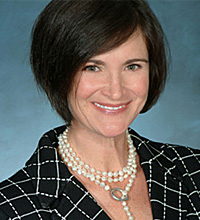Relational Competence-Based Knowledge Transfer Within Succession: An experimental study
(Authors: Isabella R. Hatak and Dietmar Roessl)
Research Applied summary prepared by Kim Schneider Malek, Schneider Consulting Group
Intrafamily succession, which can be within a nuclear family or across branches and generations, is often a goal in the overall strategy for family firm continuity. One of the factors considered essential to successful intrafamily succession is the purposeful transfer of tacit and explicit knowledge from the predecessor to the successor.
In this study, the authors used an experimental research design to test if the perceived motivation and willingness of the predecessor to transfer knowledge were impacted by the relationship competencies of the successor. 107 Austrian undergraduate students participated in this study. One-third of the participants were likely successors in family firms.
According to the discussion in the article, transferring knowledge successfully to successors in the course of intrafamily succession can provide the foundation for innovating and improving efficiency, thus taking advantage of the potential value of the predecessor’s knowledge. The typical characteristics of family firms, such as smaller size, informal organization and structure and a restrictive information policy, imply, however, that such family firms are less likely to prioritize making contextual information and framed experiences (much of which is embedded in the predecessor) explicit and more likely to allow emotional resistance to rule. What does this mean? The apparent consequence of such an outcome could be a loss of competitive advantage.
This study concluded that there are some underlying influences and processes that create an environment that encourages open and collaborative exchanges of information at all levels. Findings suggest:
- Relational competence, defined as the ability of a party to initiate and maintain relationships, and knowledge transfer are highly correlated and that this relationship between the two constructs is highly significant.
- The quality of the relationship between the predecessor and the successor is an important determinant of effectiveness in knowledge transfer. The predecessor needs to perceive and experience trust in order to take risks and eventually transition power through knowledge transfer. He or she wants to ensure the successor’s intentions are virtuous and that the successor won’t be using the knowledge to disregard the family’s collective hope and shared strategy for continuity.
The results of this study provide many implications for practice. Ideas that practitioners or family businesses can use to aid the transfer of knowledge during succession are as follows:
- Utilize (or create) a relational competence-based assessment tool (see the article for constructs to guide your thinking) to assess what the relationship dynamic is between the predecessor and the successor.
- Identify and articulate the family’s knowledge transfer and collaborative learning values through a knowledge mapping exercise.
- Customize a checklist of interview questions for the in-depth interviews with the predecessor and the successor individually; include questions that help get to ‘why’ (the underlying causes) there might be either a willingness or a resistance to knowledge transfer.
- Administer a learning styles assessment tool and a personality insight instrument that assesses thinking and behaving of both the successor and the predecessor; also conduct a team learning dynamics assessment.
- Use a matrix to prioritize a) need to know, b) nice to know, and c) need to unlearn knowledge bases.
- Get a script writer, a family business historian, and/or a graphic artist to document narratively, graphically, and creatively.
- Conduct a series of workshops, coaching, reflection retreats, and training sessions that strengthen the relational competence of the successor and construct a sense of concord (mutual fitness).
This article will also benefit the perspective of those working on building a learning organization culture in enterprising families.
About the contributor:
 Kim Schneider-Malek is an FFI Fellow and a member of the FFI GEN (Global Education Network) faculty. She is the founder and president of Family Enterprise Continuity Alliance and can be reached at [email protected].
Kim Schneider-Malek is an FFI Fellow and a member of the FFI GEN (Global Education Network) faculty. She is the founder and president of Family Enterprise Continuity Alliance and can be reached at [email protected].




